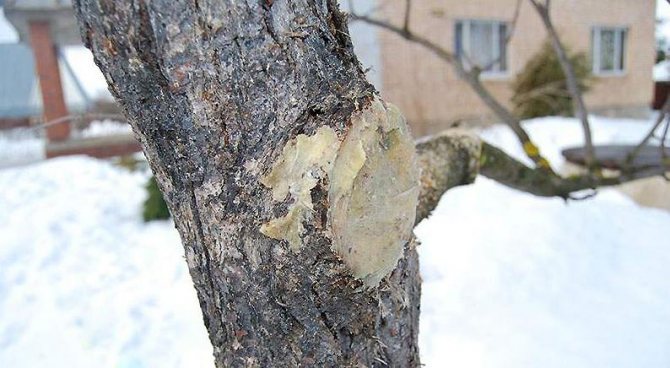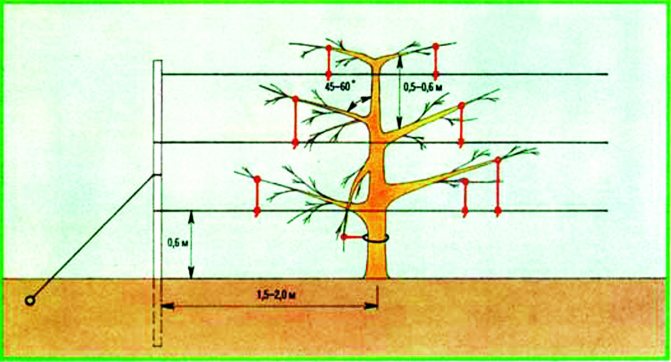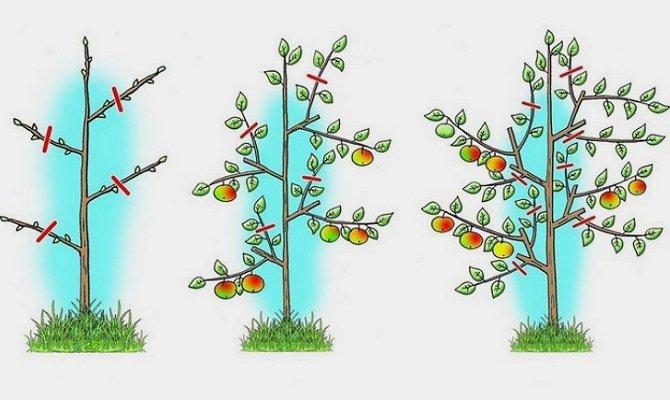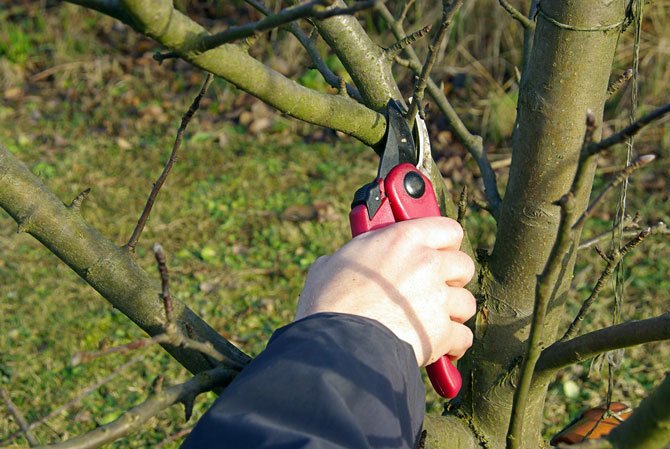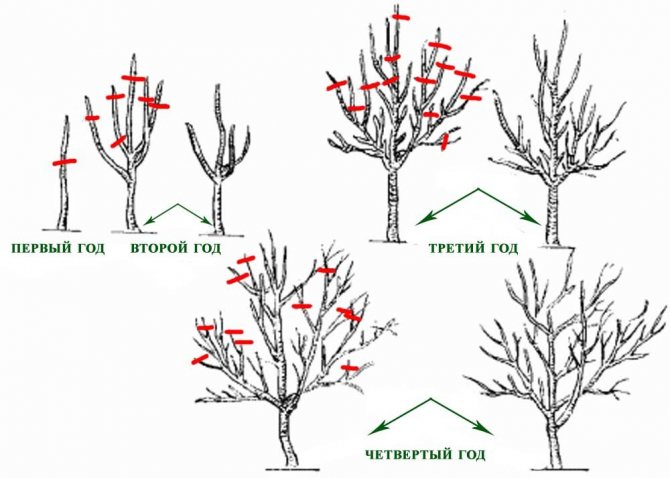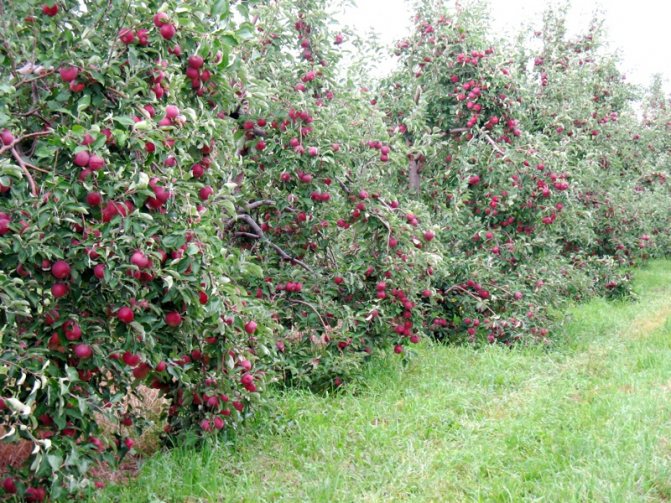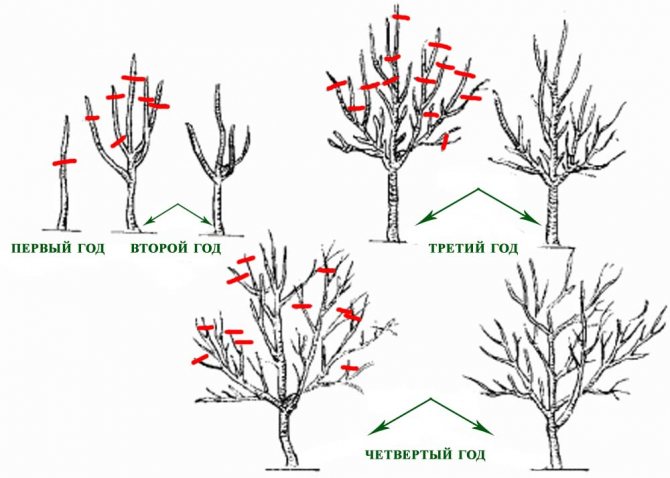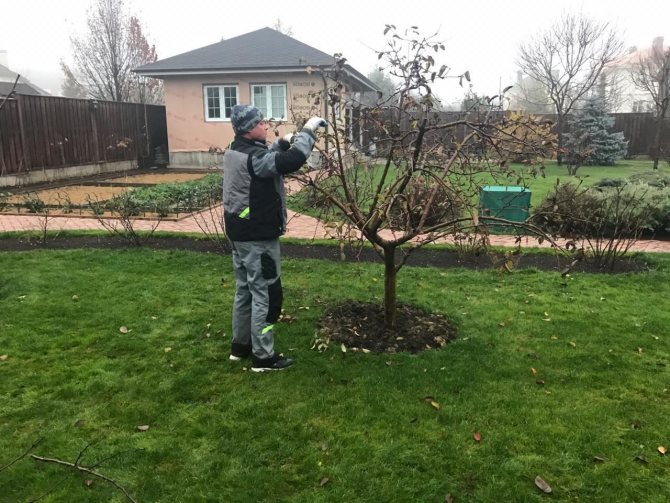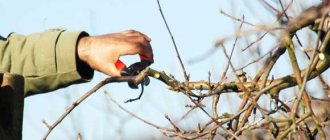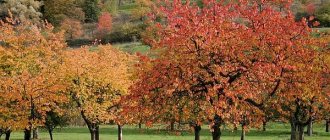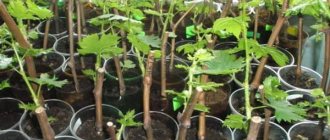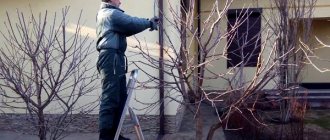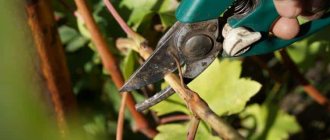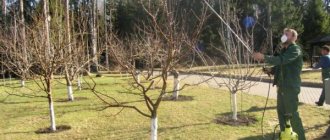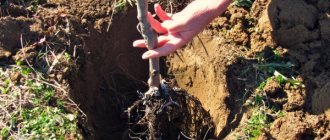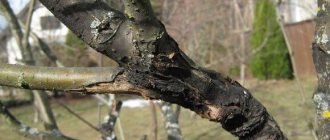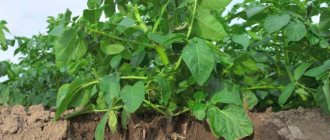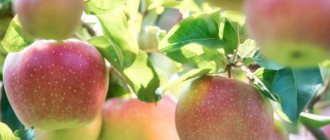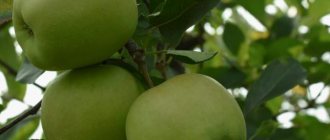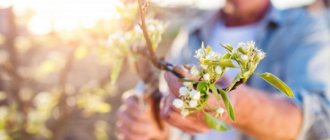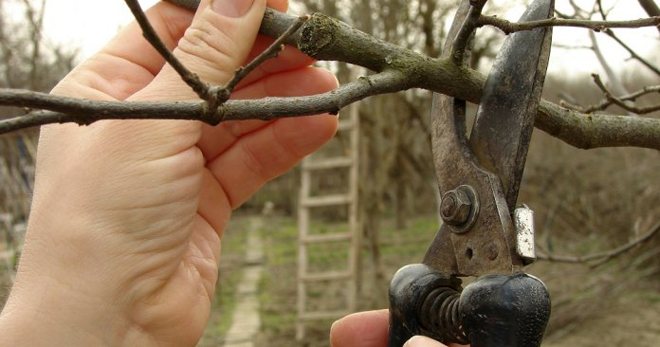
To obtain a rich harvest of fruits, it is necessary to take care of the garden before the onset of persistent cold weather. Correct autumn pruning of apple trees, carried out within the time frame established for a particular region, will help to form the crown correctly, increase the yield and quality of apples in the next year.
When to prune dwarf apple trees correctly
Experienced gardeners are advised to recommend refining fruit trees in early spring or late autumn. Each type of trim has its own characteristics.
To understand the whole process of pruning and shaping the crown of dwarf apple trees, you must definitely get acquainted with the existing terminology:
- the shoot of the first year of growth is called annual;
- branches that grow directly from the trunk are called first-order branches, and the shoots that grow from them are second-order branches;
- the leader or central guide is an escape, which is an extension of the trunk;
- the branches on which the crop is laid are called overgrown;
- sometimes a lateral shoot grows in parallel with the leader. The so-called competitor;
- flowers grow from flower buds, and shoots from growth buds.
Pruning a dwarf apple tree in spring: a diagram for beginners
Spring pruning should be done as soon as the snow has melted and sap flow has not begun. If you do this later, the tree may not survive. All damage, regardless of when the pruning was made, in spring or autumn, must be treated with garden varnish. During spring pruning, all branches that have died during the winter are removed, and a crown is formed.
The main trunk is cut to a height of no more than 2 m, and the average length of the side branches is 1 m. The lower and middle branches are always longer than the upper ones. Branches that grow into the interior of the tree or form an acute angle with respect to the trunk must be removed. The advantage of spring pruning is that you can form a beautiful tree crown outwardly, strengthen the trunk and main branches, and improve the quality of future fruits. But there are also disadvantages. It can be difficult for beginners to determine when pruning is due, and as a result, the tree is more stressed.
REFERENCE! With a large removal of the number of branches, a retardation of the development of the tree occurs, which in turn leads to a later ripening of the fruit.
Pruning dwarf apple trees in the fall for beginners
Autumn pruning of dwarf apple trees is done as soon as the plant has shed all the leaves. It is imperative to have time to prune before the fall frosts. Since it will take about 2 weeks for the apple tree to heal the wounds. First, the decrepit branches infected with disease or pests are removed, then they are engaged in thinning the crown of the tree. This is necessary for the optimal development of the tree. Also, the autumn pruning of a dwarf apple tree is a mandatory sanitary measure. This treatment helps to protect the tree from various pests, and will make it possible to better endure the winter.
Dates of the
The timing of pruning dwarf apple trees in the fall must be chosen correctly. The air temperature should not be lower than 5 ° С.
Attention!
Experienced gardeners do not recommend doing the work during the period when the tree has leaves.
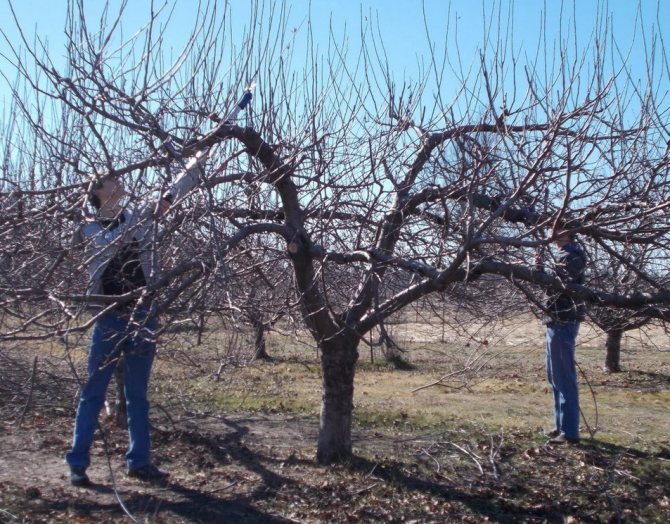

The procedure is carried out when the plant is at rest and the juice stops moving through it.It is necessary to have time to form the crown before the cold weather sets in. The peculiarities of the climate of a particular area affect the timing of the event. It is necessary to calculate that 14 days remain before the arrival of frost. Until that time, the cut areas should heal completely, then the tree will not be damaged. In the southern regions, October is suitable for pruning, in the middle lane - September. You need to trim it carefully so as not to cause tremendous stress on the plantings. A sunny day is chosen for the work. You should not perform the procedure in the rain, because moisture has a bad effect on wound healing. In such sections, pathogenic microbes often multiply.
Pruning apple trees at 1 year
In an annual tree, when planting, the trunk is cut to a height of 0.8-1 m. This will allow rapid rooting of the tree and further enhance the growth of lateral shoots. Excessively long lateral branches should be shortened so that 3-5 healthy buds remain on them. At one year old, the seedling should consist of a trunk and 2-3 branches. To ensure the correct development of the stem, shoots growing at a distance of 40-50 cm from the ground must be removed.
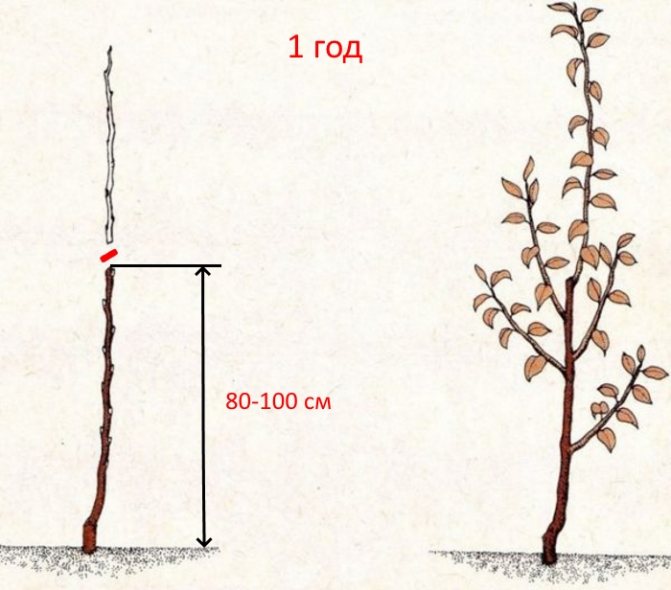

The cut is made on the kidney opposite to the graft.
Useful videos
Watch a video about the Melba apple variety: Watch a video about an apple Glory to the winners: Watch a video about an apple Bogatyr: Watch a video about dwarf columnar apple trees:
Very often there is not enough space in the orchard for all the crops and varieties that the owner would like to grow. Ordinary Russian summer residents know firsthand about this problem, trying to fit a residential building, a vegetable garden and an orchard on six acres of land. An excellent way out in such a situation can be planting dwarf trees, which are not inferior to conventional crops in yield and quality of fruits, but take up much less space. Compact fruit trees have a lot of advantages, but the cultivation of "dwarfs" has its own nuances, which must be taken into account.
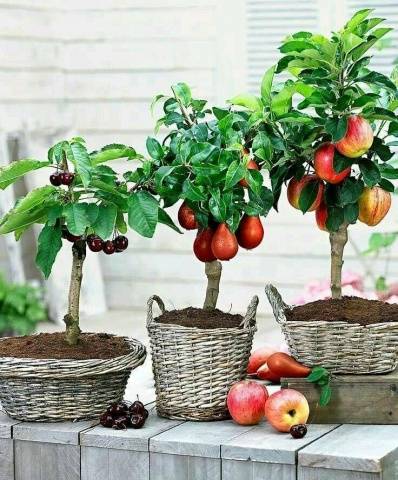

The features of "dwarfs" and recommendations for their cultivation will be discussed in this article. It will also list the most popular varieties of dwarf fruit trees and provide gardeners' reviews of some of them.
Pruning apple trees at 2 years old
In the second year of apple growth, it is necessary to leave 3-5 sufficiently developed shoots, the rest is removed. The same pruning is repeated in subsequent years. When the apple tree reaches the desired and optimal height for you, a new growth of the central conductor is removed. Lateral crown-forming branches must be removed as soon as they grow to 40-50 cm. If necessary, overgrowing branches are cut out. With this type of pruning, the apple tree should take on a pyramidal shape.
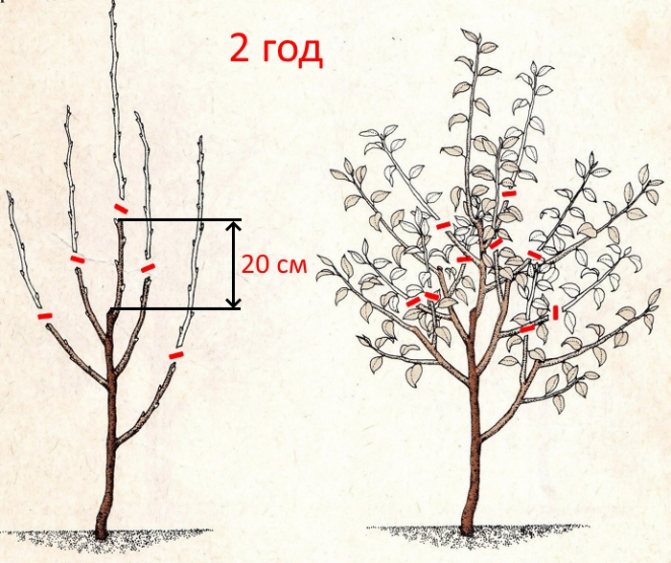

The center conductor is trimmed to the kidney opposite to last year's cut
Varieties of "dwarfs"
Modern breeding is moving forward with huge strides, and today almost any type of dwarf crops are on sale. Every gardener can start a real mini-orchard with apples, pears, cherries, peaches and apricots on his plot.
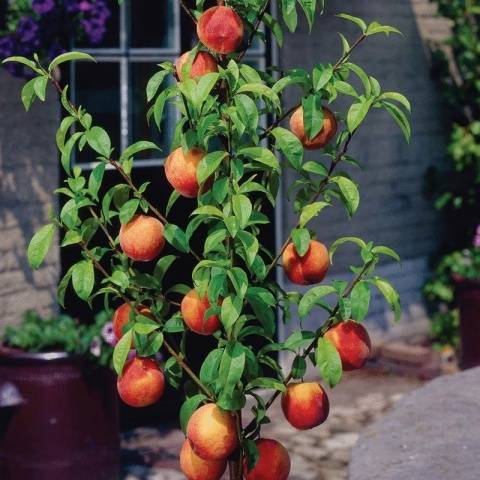

Miniature apple trees
The first dwarf trees that appeared in Russia are miniature apple trees. Usually summer residents of the country grow them on a special M9 rootstock, which retards the growth of the tree and contributes to its rapid vegetation. Not all low-growing apple trees are suitable for the climatic features of the country, but there are several successful varieties.
Candy
The fruits of this dwarf apple ripen in August. The average apple weight is 110-120 grams. The fruit tastes good, the fruit is juicy, fragrant, with firm pulp. The peel is colored yellow-green, covered with stripes.
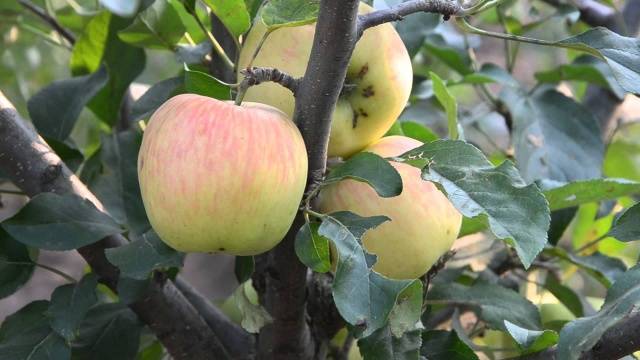

Melba
A dwarf super early variety, fruit ripening begins in the second half of July and lasts almost a month. The yield of the tree is very good.Apples grow to medium size and have a pleasant caramel flavor and aroma.
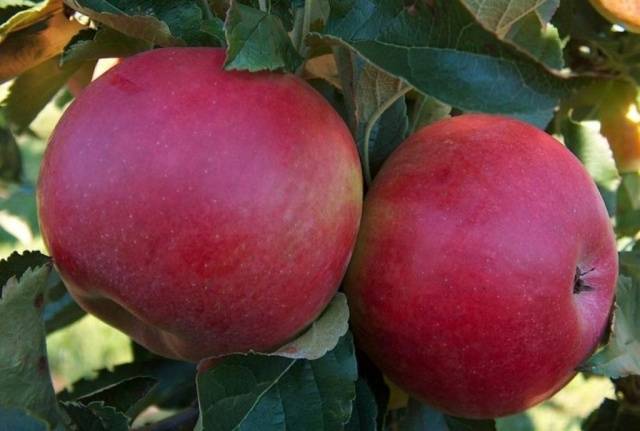

Pears
The overwhelming majority of undersized pears grown in Russia belong to mid- and late-ripening varieties.
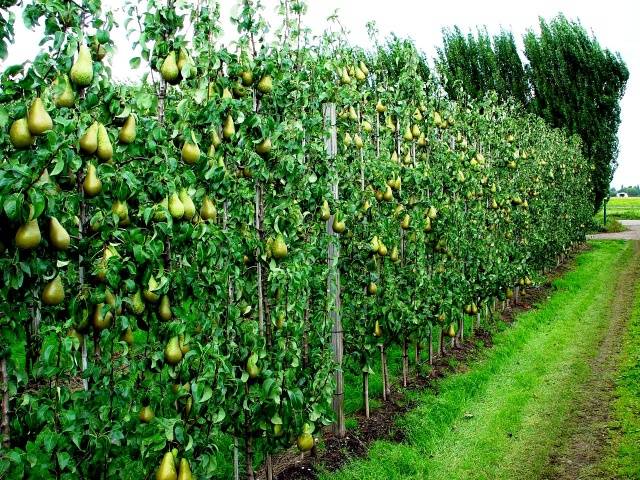

Velez
Dessert variety with round fruits. Large pears - 180-200 grams each. The peel of the fruit is green.
Parisian
A dwarf variety with late ripening. This winter pear produces large, sweet and sour fruits. The shade of ripe fruits is yellow-green with a redhead clearly visible through the peel.
Plum
Not only pome crops, but also stone fruit crops can be dwarf. It is recommended to grow one of the following varieties in most of the territory of Russia.
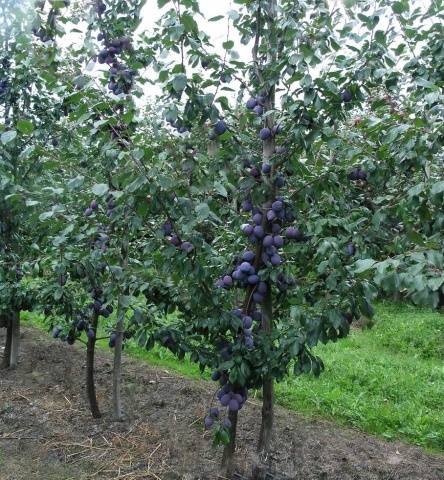

Blue Free
This dwarf plum has very good frost resistance, therefore it is suitable even for the northern regions of the country. The crop ripens early and quickly. The fruits are colored inky blue, are large and oval in shape.
The president
A bonsai of this variety has a very significant plus - unpretentiousness. In any climatic conditions, on almost any soil, the plum harvest ripens quickly and pleases with quality and quantity. Plums are oval, sweet and tasty. The dwarf variety President is excellent for growing on an industrial scale.
Peaches
Peach trees are not very tall anyway, and the dwarf varieties of this culture rarely even reach two meters.
Sweet Cap
The most common dwarf peach is the Sweet Cup fig hybrid. The culture pleases with high yield and very good winter hardiness. The flesh of the fruit is snow-white, and the taste is very pleasant, sweet.
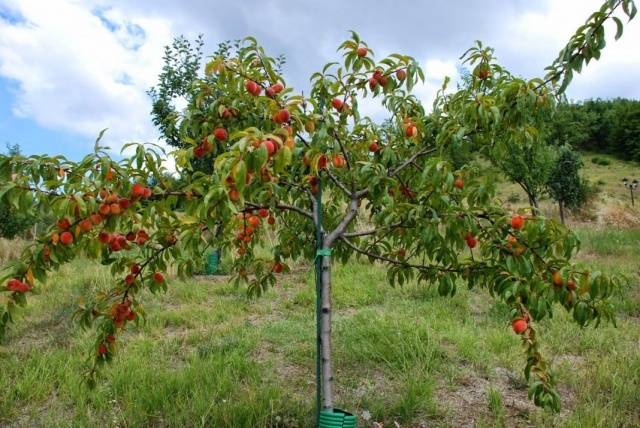

This peach is also fig. The dwarf variety is highly resistant to various diseases. The fruits are very large, the peaches are sweet and juicy. The variety is excellent for both private and industrial cultivation.
Miniature apricots
Believe it or not, even apricots can be dwarf today. This culture loves warmth and sun, therefore it is recommended to grow sweet apricots in the southern and central regions of the country.
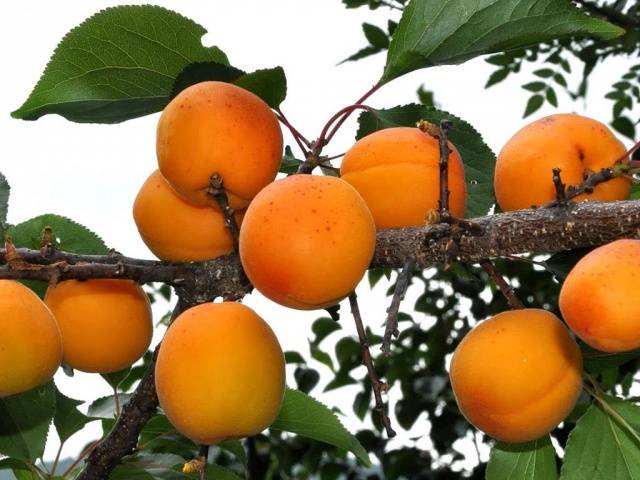

Hardy
The name of this dwarf variety speaks for itself: the tree perfectly tolerates drought and low temperatures. Apricots are large, aromatic and tasty. The fruit bone is easily separated from the pulp. The peel is thin, and the flesh of the apricot is sugary.
Crimean Cupid
Medium ripening dwarf variety. The tree bears large fruits, weighing about 100 grams. Apricots are slightly sour, tinged with a lemon shade, but they are very aromatic.
Pruning apple trees at 3 years old
When you reach three years of age, you do not need to prune too much young trees. In addition, it is necessary to add new skeletal branches. If the central trunk grows too quickly, it must be restrained by pinching or lightly trimming the crown.
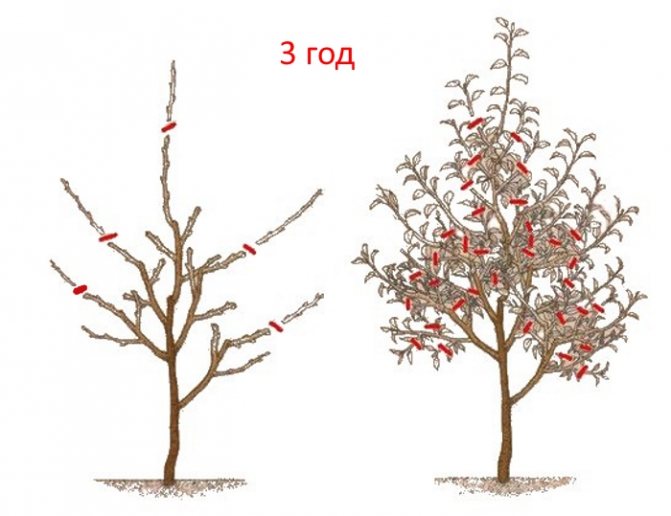

Cutting the center conductor and side branches by 20 cm
What varieties of undersized trees are found?
Breeders have developed a large number of varieties of dwarf apple trees - leaders among gardeners. The apple tree is not afraid of many diseases, gives a high yield, and, which is especially important, you can easily make a dwarf rootstock for it. Pears bear fruit just as well. They are not afraid of bad weather and diseases.
Sweet Cup Peach has a pleasant harvest with a whitish flesh. The harvest is stable. The tree is not afraid of drought and cold. Peach Ufo is also resistant to drought and frost. The flesh of the fruit is yellow, with a slightly sour taste.
Blue Free plum is often planted in areas with cold climates. Not afraid of root cancer and chlorosis. The fruits are oval, dark (almost black), have a waxy coating on the skin. Chachakskaya plum is a late-ripening variety, the fruits ripen in autumn. Plum President will endure the cold winter. Fruits are sweet, with yellow-green flesh. The variety is very unpretentious.
Pruning semi-dwarf apple trees Russian spindle
There are several types of crowns for dwarf apple trees: "slender spindle", "flat spindle", "dwarf pyramid", "new Russian spindle". The last one on this list is the most popular.
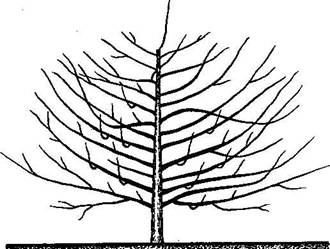

Crown shaping scheme - flat spindle
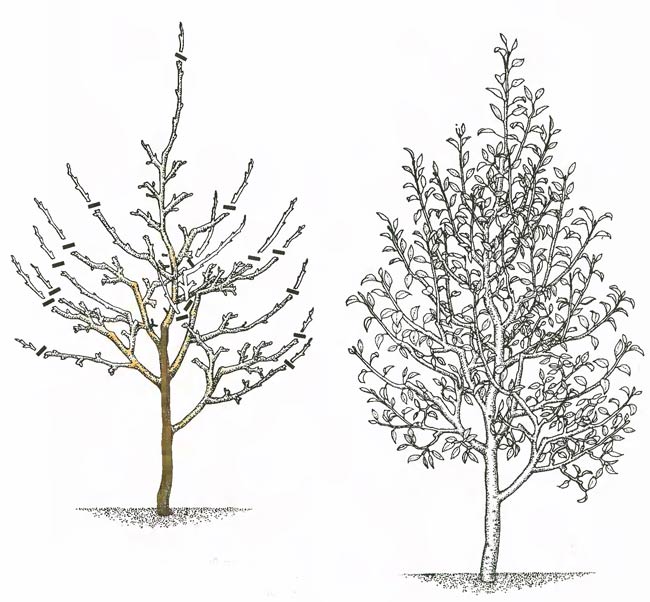

Crown formation scheme - dwarf pyramid
Crown shaping scheme - slender spindle
This formation was developed at the end of the 20th century for Russian conditions. The small leader shape of the crown in the form of a spindle allows for high yields. Grafting by budding on medium-sized rootstocks is carried out at a height of 10-15 cm, and on dwarf rootstocks - 5-10 cm. Skeletal branches are laid at a height of 0.6-1 m. The method of forming a "new spindle" is divided into three stages: conductor, skeletal branches and work with fruiting branches. The central conductor should be one, located strictly vertically, without branches. To form a crown, you need to use all the side branches, transferring them to a horizontal position with the help of small weights and spacers. Any side branch should be half as thin as the center conductor. In case of overgrowth, it is removed, leaving an oblique cut.
The lower semi-skeletal branches should have 3-5 weak lateral branches, 1-2 branches in the middle of the trunk, the upper ones are the weakest. After the lower branches have reached their maximum length, they must be shortened to a suitable lateral branch. Likewise, they deal with too drooping branches. Further, over the course of several years, it is necessary to repeat all the pruning and maintenance cycles on new tiers. They must be laid annually until the tree grows to a height of 3-3.5 m.At the same time, excessively thick branches (more than half the diameter of the main trunk) must be cut out in time on an oblique cut or transferred to a thin lateral branch.
Tips for beginners
Pruning tools must be well sharpened. Otherwise, you can leave large cuts and logs on the tree, which will drag on for a long time.
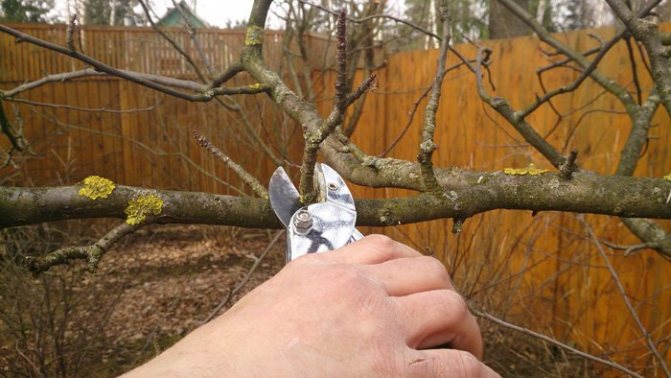

Use only high-quality, well-sharpened tools for proper pruning
If instead of garden varnish you prefer paint as a putty, remember, only oil will do, all the rest will burn the bark of the apple tree.
As a disinfectant, a mixture of lime and copper sulfate is often used at the rate of 10: 1.
Only the trunk of an old apple tree can be processed immediately; in the case of young trees, you should wait a day. Cuts on apple trees need to be putty on without fail.
Young branches of a freshly planted apple tree must be pruned immediately, since an undeveloped root system will not be able to supply them with a sufficient amount of liquid at the moment.
After planting pruning, you can not disturb the tree for 3-5 years. Usually during this time the tree is formed and is ready for the first fruiting. The exception applies only to dry and damaged, as well as overgrown branches. The latter just need to be shortened.
Pruning dwarf apple trees in the Moscow region
An approximate schedule for pruning a dwarf apple tree in the Moscow region:
- Spring: from late February to early May. During this given period, it is necessary to have time to make a formative and rejuvenating pruning of mature trees. Remove broken and damaged branches.
- Summer: August-September. One-year increments are pruned.
- Autumn: mid-October to mid-November.
- Due to temperature jumps and unstable weather, winter pruning in the Moscow region is not recommended.
Varieties rating
According to fruit tasting
Apples varieties to your liking Candy and Melba are the sweetest, besides, Melba fruits have a caramel flavor.
BUT reviews about the fruits of the Bogatyr variety say that they are the most sour.
Disease and pest resistance
Among the varieties grown in the Moscow region, the most resistant to diseases and pests are considered (you could see their photo and description above):
- Zhigulevskoe;
- Bogatyr;
- Grushovka Moscow.
By winter hardiness
The most winter-hardy varieties of dwarf apple trees for the Moscow region are dwarf apple tree Bogatyr.
Largest fruit
This is the grade Autumn striped.
Should the trunks of plantings be whitewashed?
There is no definite answer to this question. Every gardener looks at it from his side. Some lovers of dwarf trees, the photos of which you see in the article, believe that whitewashing the trunks is not needed. On the contrary, many gardeners are inclined to believe that the procedure is necessary. Whitewashing is an excellent prevention of many tree diseases.
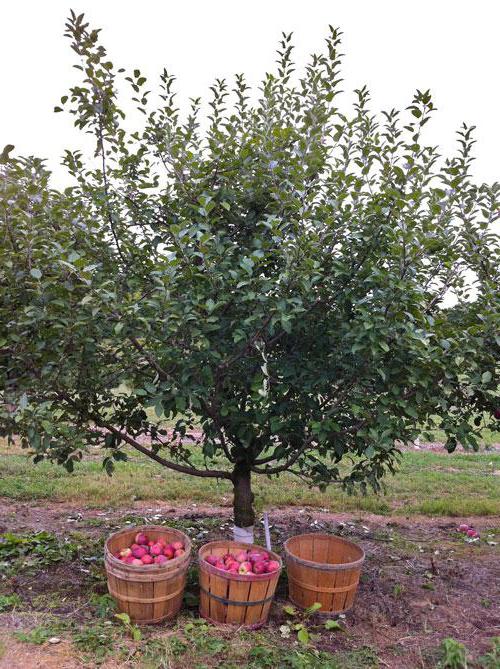

Professionals believe that dwarf varieties must be whitewashed. This not only scares off pests, but also helps the trunks to survive temperature extremes, the first rays of the sun in spring.
It is necessary to whitewash not only young shoots, but also adult plants. True, the solution being prepared for seedlings needs to be made less concentrated. Very saturated lime can ruin the tender young bark.
It is better to whitewash the trunks three times a year (in October, May and July).
Landing scheme
Saplings of dwarf fruit trees are placed in the hole very carefully. The root collar should be level with the ground. If a seedling is placed too deeply, it may rot and not survive. After placing the sprout in the hole, the ground around it is tamped and a near-stem roller is created. Its height is about 10 cm, and its width is 60. It is needed so that the water gets straight to the roots during irrigation. When the bonsai seedlings are planted, mulch the soil around them.
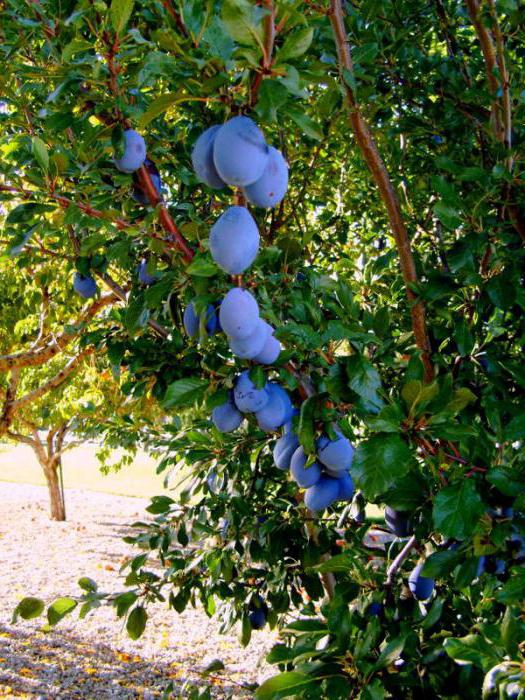

If you are creating a dwarf garden, keep your distance. The distance between trees must be at least two meters. Remember that small trees need support. It is better to tie the tree trunk to the peg with a narrow rubber band.
Coniferous small trees for the garden
In addition to dwarf fruit trees, their coniferous counterparts can also be planted in the garden. From a decorative point of view, they look great on the site.
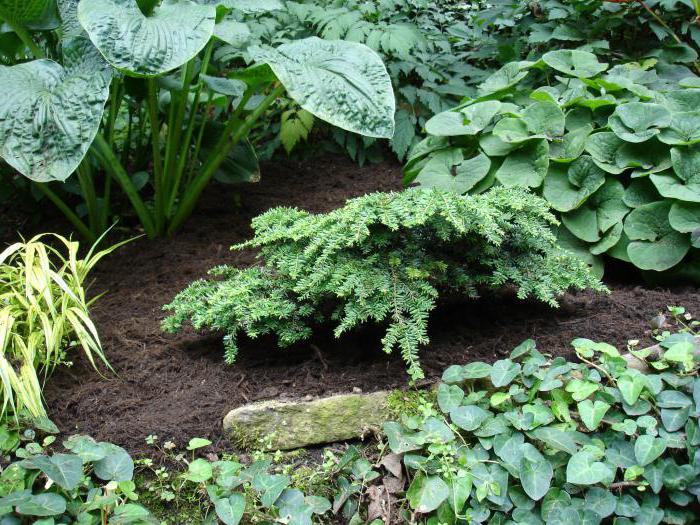

- Western thuja - dark green needles, size - up to 30 cm.
- Spruce - light green needles, size - up to 50 cm, dense crown.
- Mountain pine - dark needles, size - up to 50 cm.
- Mountain pine grows up to 2 m, the needles are very dense, dark and beautiful.
- Gray spruce - the needles are slightly bluish, grows up to 60 cm.
- Serbian spruce - size - up to 25 cm, needles are dark green.
- Eastern thuja - the needles are slightly yellowish, the size is up to 60 cm.
- Virginia juniper - grows up to three meters, has slightly blue needles, a narrow crown.
- Berry yew - approximate size - 80 cm. The needles give off yellowness.
- Horizontal juniper - size - up to 20 cm, needles are silvery, gives a blue.
- Spread juniper - size - up to 20 cm. The needles are green on one side and blue on the back.
Using different varieties of coniferous seedlings, you can create very curious compositions in the country.
Thinning of fruits
As you know, a large number of fruits are tied in a low-growing apple tree. And this negatively affects the well-being of the tree, because, spending the reserves of nutrients to maintain the fruits, it is greatly depleted. And the quality of the fruits themselves also suffers: the color of the apple will be bad, insufficient, let alone the size. To avoid this, they carry out a saving thinning of the ovaries. After this procedure, only as many fruits are left as the tree can provide with decent nutrition. Such fruits will have excellent characteristics. And in the end result, you can get a good harvest of fairly high-quality and large fruits.And the growth of branches due to the redistribution of food will only increase annually. The complex and rational use of thinning with fertilization and skilled pruning will contribute to the healthy state of the dwarf apple tree, which will result in additional annual growth.
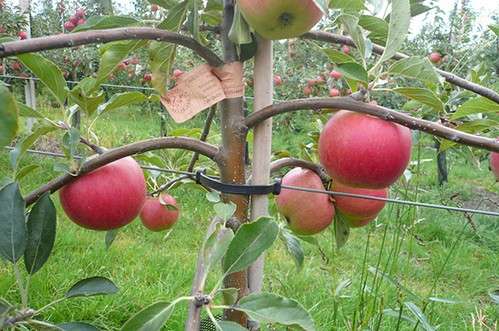

It is better to carry out thinning after the June fall of excess ovaries. Once that happens, know it's time to start thinning. First, shake each branch so that the loose ovaries fall off on their own. In the process of thinning, diseased, deformed or small fruits are also disposed of. Only healthy and best specimens are left.
After reading this article, you have learned how and why correct pruning is necessary. By limiting the growth of the crown, you allow the tree to concentrate its energy on the fruits, and the results will not be long in coming. Your apple stock will bear fruit and delight you.

